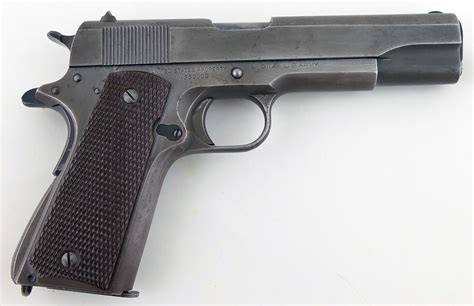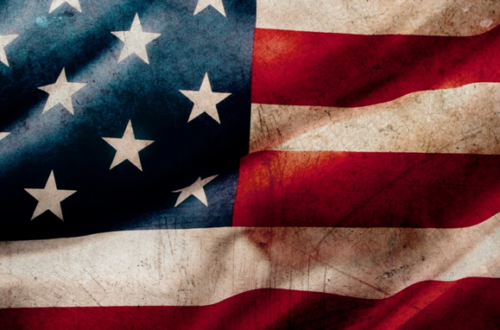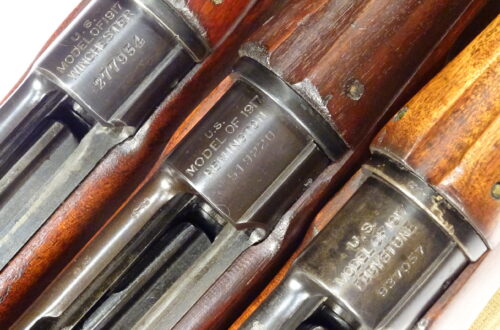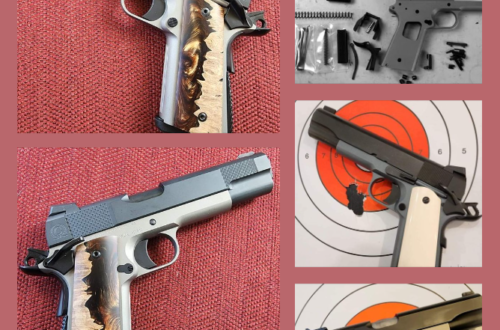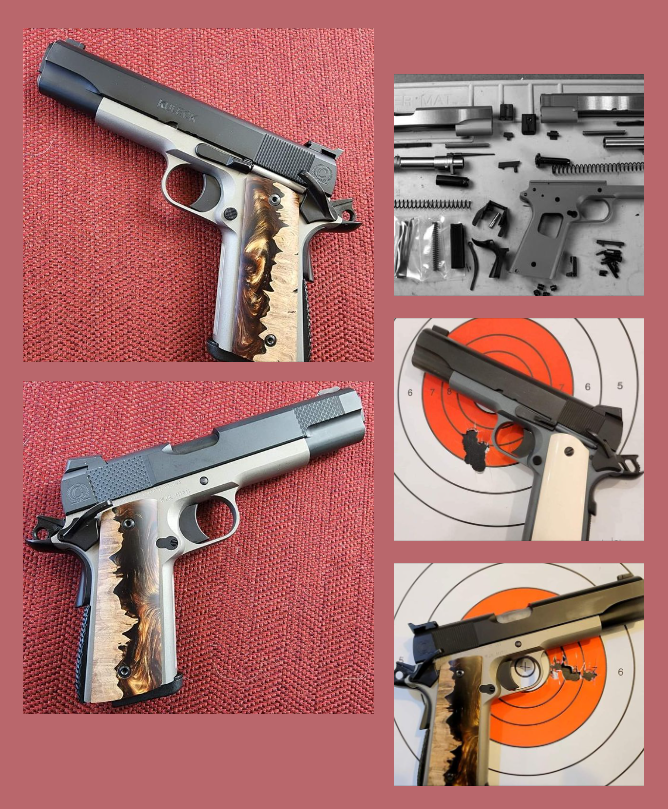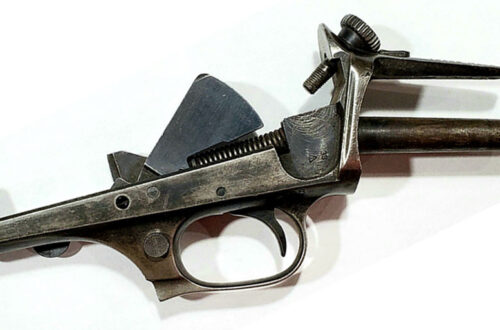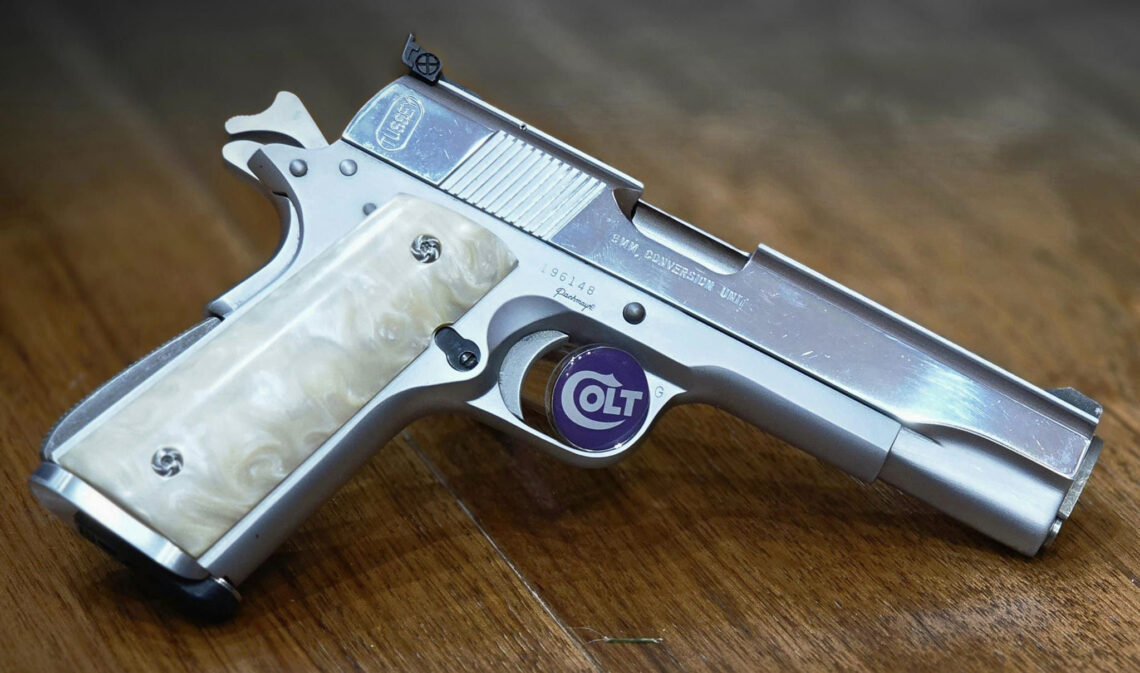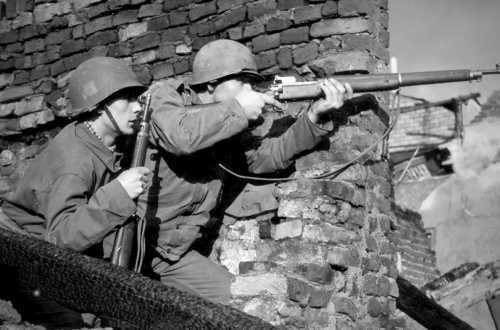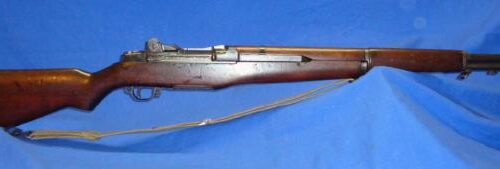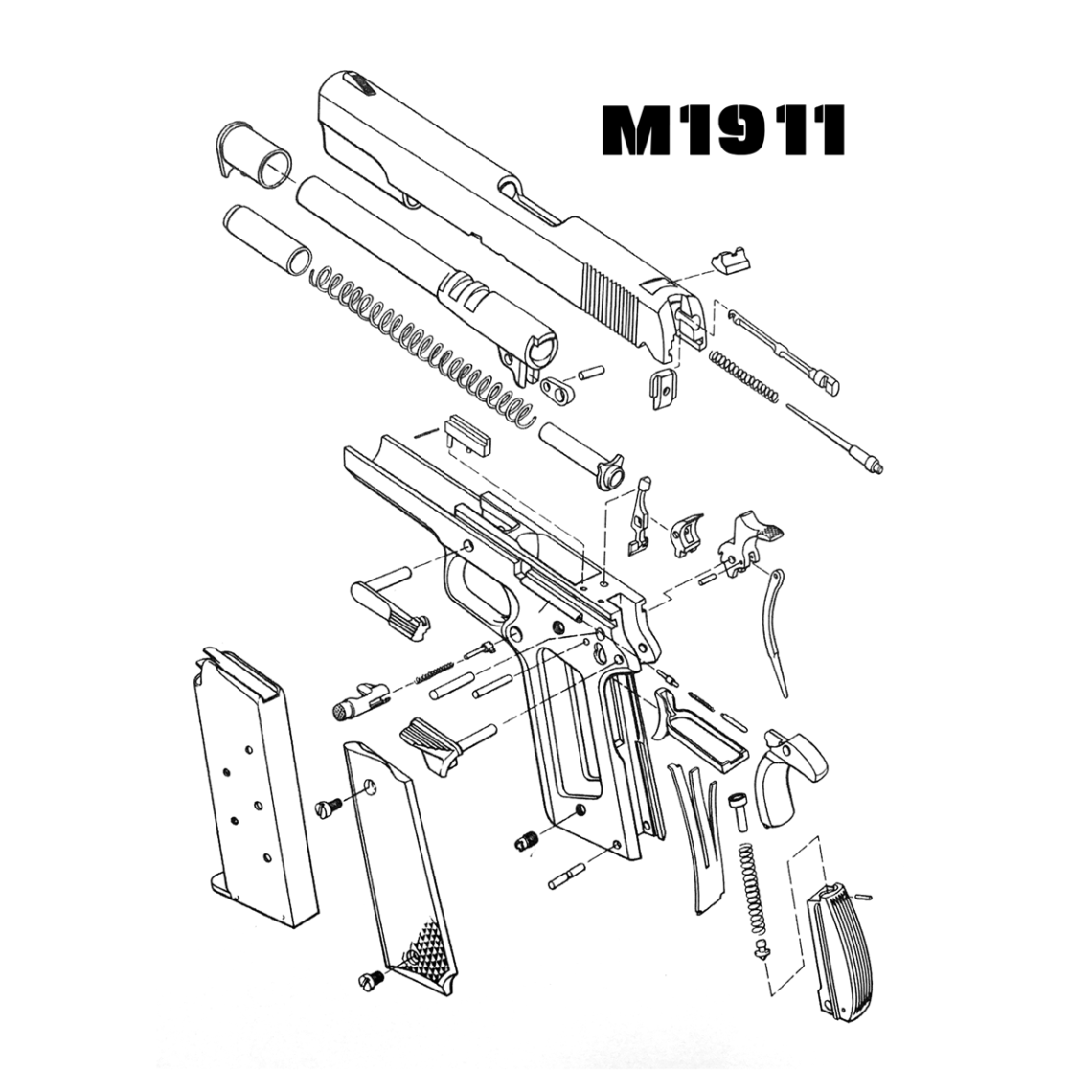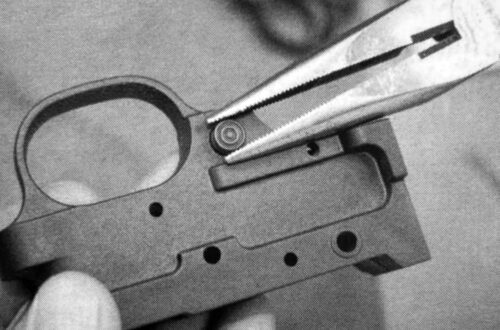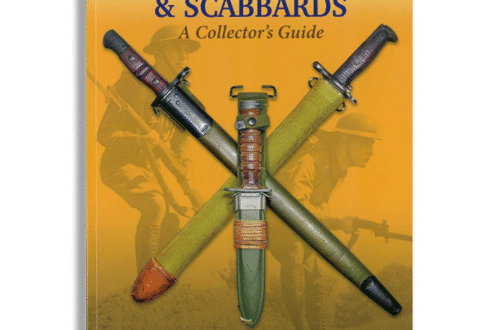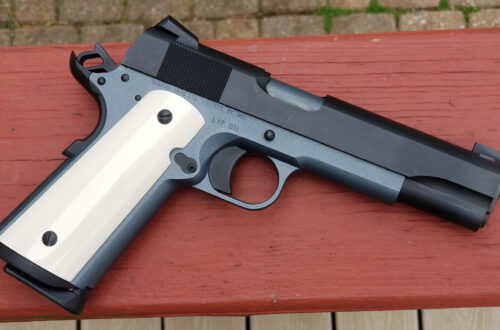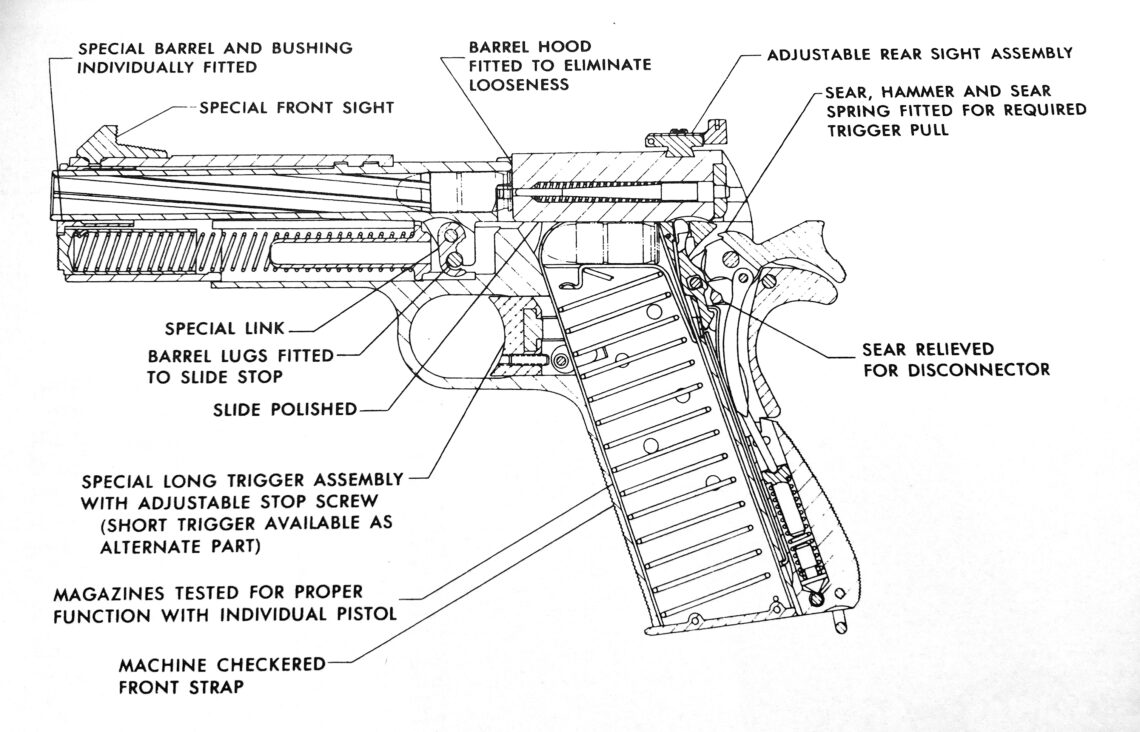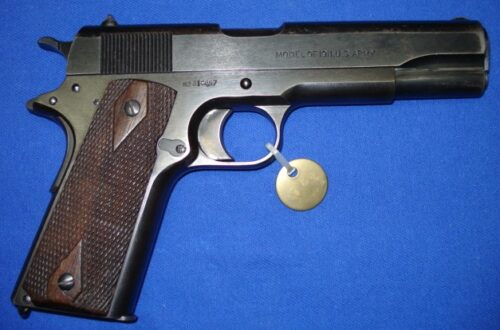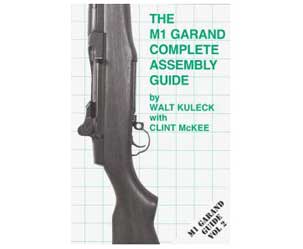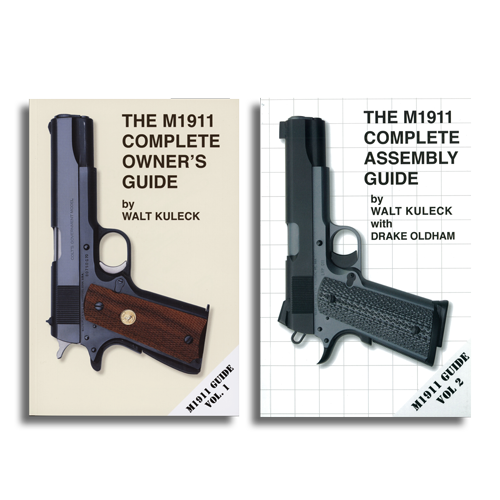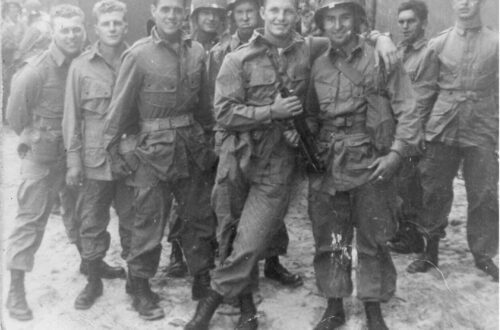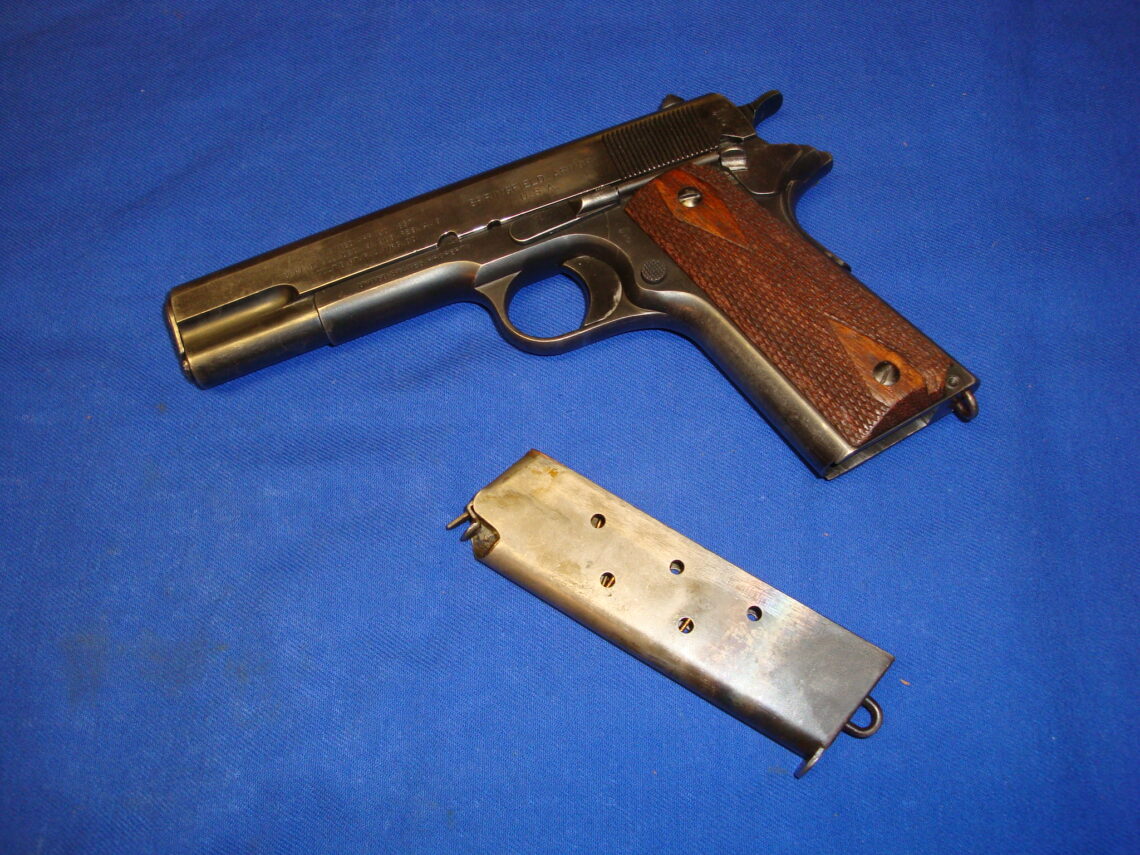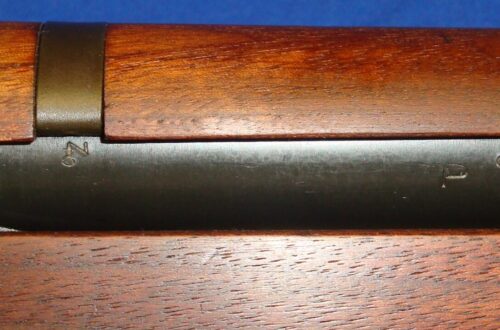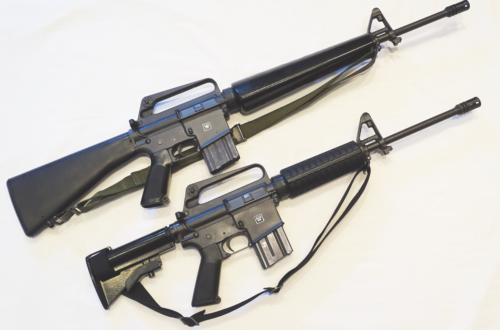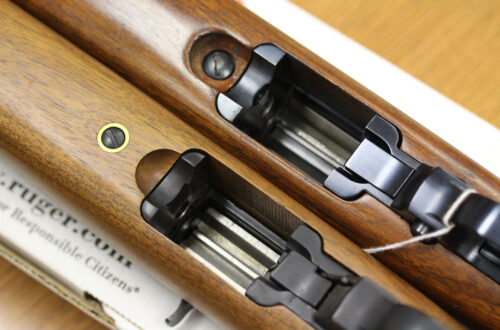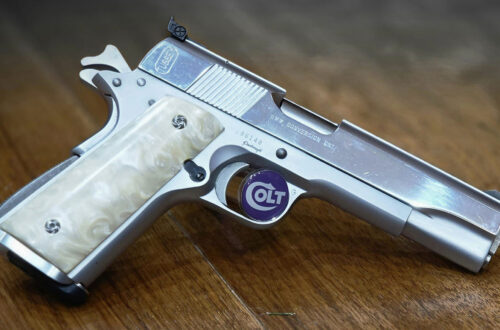M1911
-
Timeless Power: The M1911 Featured in M1911 Owner’s Guide
Few handguns have left an enduring legacy like the legendary Colt M1911. Featured prominently in Scott Duff’s M1911 Owner’s Guide, this semi-automatic .45‑caliber pistol stands as a cornerstone of firearm history and culture. A Breakthrough in Firepower Developed by the genius of John Moses Browning and adopted by the U.S. Army in March 1911, the M1911 revolutionized sidearm design. Its powerful .45 ACP round and short recoil, single-action mechanism delivered a new standard of stopping power and battlefield performance. Its 7–8 round magazine vastly outpaced the revolvers it replaced. Proven Through Global Conflicts From World War I to Vietnam, the M1911 served as the trusted sidearm of U.S. forces. Sgt.…
-
WJK 1911
There has been a lot of positive reaction to my Facebook page’s cover picture of “WJK M1911,” one of the two pistols I built with and for “The M1911 Complete Assembly Guide.” I thought some might find this pistol’s background of some interest. The preparation for the Assembly Guide began with attending Larry Vickers’ second-ever M1911-building class. Larry had arranged for the students to begin with Caspian “gunsmith-fit” frames and slides; each frame’s serial number began with “LVP.” My frame was #11, hence “LVP 011.” Unfortunately, a family medical emergency took me away from that class when I was not yet halfway through it. Fortunately, during the photography and writing…
-
The Mysterious Case of the Pachmayr & the Tussey
Some years ago, whilst researching “The M1911 Complete Owner’s Guide,” I came across a Pachmayr custom M1911 in .22 Long Rifle. It was built with a .22/.45 Conversion Unit. Nothing particularly puzzling there, except for one nagging question: what was the source of the frame? Clearly, the frame was produced prior to 1968*, at a time when, while the serial number (if present) of American-manufactured firearms was to be marked on the frame or receiver, the manufacturer was free to place the company name and address and model name anywhere it chose. In the case of automatic pistols, generally, the manufacturer and model were marked on the slide, with the…
-
The M1911 Complete Owner’s Guide – Table of Contents
The M1911 pistol is a single-action, recoil-operated, semi-automatic pistol chambered for the .45 ACP cartridge. The pistol’s formal U.S. military designation as of 1940 was Automatic Pistol, Caliber .45, M1911 for the original model adopted in March 1911, and Automatic Pistol, Caliber .45, M1911A1 for the improved M1911A1 model which entered service in 1926. Designed by John Browning, the M1911 is the best-known of his designs to use the short recoil principle in its basic design. The pistol was widely copied, and this operating system rose to become the preeminent type of the 20th century and of nearly all modern centerfire pistols. It is popular with civilian shooters in competitive events…
-
The M1911 Complete Assembly Guide – Table of Contents
In this book you’ll learn about Pistolsmithing, the M1911 magazines, triggers, stops, locks and history – and much more. Inside: The Model of the 1911 was designed to be a “battle pistol.” The M1911 was adopted by the US Army in 1911 largely on the basis of successfully weathering stringent testing, including environmental testing. These “dust and rust” tests were surmounted by the M1911 despite the metallurgy of the 1910 by providing sufficient clearances for contaminants to be literally “shrugged off.” Thus, while the original M1911s may not have rattle like maracas as legend would have it, they were designed to be loose enough to tolerate dust ‘n rust and…
-
My Favorite M1911A1 Pistol
This post is my third about my favorite World War II U.S arms. The first was, of course, about the M1 Garand rifle. The second was about the M1 and M1A1 carbines. This one is about my M1911A1 pistol. The following paragraph is repeated from my first story in Scott & Walt’s Gun Tales. As a researcher and serious student of American history I like comparative technological study. Therefore, my theme for World War II focuses on the year 1943. By 1943 the primary US arms were well developed and production was at or nearing its peak. Americans were engaged in combat against the Axis powers around the world. My…
-
M1911 Springfield Armory, 1914 Production
I began collecting U.S. martial arms in 1980. My interest was focused on M1911 and M1911A1 service pistols. A 1983 business trip in to Holyoke, MA and time to kill before my return flight led to my first visit to Springfield Armory National Historic Site Museum (SANHS) and triggered an interest in all arms made by Springfield Armory. By 1986 my interest narrowed to collecting M1 Garand rifles and M1911/M1911A1 pistols. My interest in both arms continues to this day. Over the decades I’ve been fortunate to have owned many outstanding examples of nearly every manufacturer with many having been in outstanding condition. But a very good condition M1911 manufactured…
-
Seeing Double: Duplicate Serial Number – Springfield Armory and Winchester M1 Rifles
Most long time M1 rifle collectors know that duplicate World War II serial number Springfield and Winchester rifles exist. This was revealed in the July 1960 issue of American Rifleman magazine by a brief article that included a photograph of an SA and WRA rifle both with serial number 2445470. In 1987 I conducted a survey of serial numbers contributed by the Garand Collectors Association (GCA) membership, it revealed that several blocks of assigned serial numbers that were duplicated. This information was presented in my book “The M1 Garand: World War II” in Chapter 4, Production, Deliveries, and Serial Numbers. Newer collectors may not have been aware of this duplication,…
-
The Story behind “The M1911 Complete Assembly Guide”
When one decides to write a book, the path may be straight and narrow. Get an idea, do the research, write the words. Fiction or non-fiction, that’s the way it often goes. Sometimes, though, the path to a book is not so direct. That was the case with “The M1911 Complete Assembly Guide.” Back in 2007, I got the idea to write a book on the Model of 1911 pistol. As is my usual plan of attack, despite having at that time some forty-seven years of experience with M1911s, I began a deep dive into the history and function of Browning’s masterpiece. I can recall in 1960, when I acquired…
